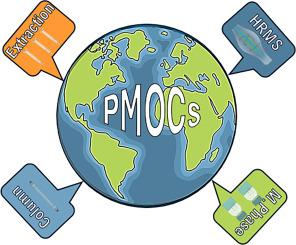Liquid chromatography-high resolution mass spectrometry based analysis of persistent mobile organic compounds in aqueous samples: Method development and optimization
IF 6.2
引用次数: 0
Abstract
Persistent Mobile Organic Compounds (PMOCs) represent a critical threat to water resources due to their high solubility, resistance to degradation, and potential toxicity, posing risks to human health and ecosystems. Their detection and analysis are particularly challenging, necessitating advanced analytical techniques to support regulatory measures and ensure safe drinking water. This study addresses these challenges by developing and optimizing a robust method for PMOC detection, integrating solid-phase extraction with liquid chromatography-high resolution mass spectrometry (SPE-LC-HRMS). By bridging analytical gaps in PMOC identification, the research contributes to water quality protection and aligns with global environmental and public health goals. The method is designed to accommodate the diverse physicochemical properties of PMOCs, enabling the detection of a broad spectrum of compounds. Innovations include the creation of a comprehensive PMOC target list, optimization of sample preparation with specialized SPE cartridges, and the fine-tuning of chromatographic and HRMS parameters. A central composite design and desirability function (DF) approach were used to optimize the HRMS analysis, while the most suitable SPE cartridge, column, and mobile phase composition were carefully selected through experimental trials. The method achieved recoveries within 70–120 % and excellent linearity (r² > 0.997) for all analytes. Validated under European directives (2002/657/EC and SANTE 11,813/2017), the study offers a sensitive, reliable, and regulatory-compliant framework for PMOC monitoring in water systems. By addressing both scientific and regulatory demands, this work advances environmental analytical chemistry and strengthens efforts to protect water resources from emerging contaminants.

基于液相色谱-高分辨率质谱法的水样中持久性流动有机化合物分析:方法开发和优化
持久性移动有机化合物(PMOCs)由于其高溶解度、耐降解和潜在毒性对水资源构成严重威胁,对人类健康和生态系统构成风险。它们的检测和分析尤其具有挑战性,需要先进的分析技术来支持监管措施并确保饮用水安全。本研究通过开发和优化一种可靠的PMOC检测方法,将固相萃取与液相色谱-高分辨率质谱(SPE-LC-HRMS)相结合,解决了这些挑战。这项研究弥补了在查明PMOC方面的分析差距,有助于保护水质,并符合全球环境和公共卫生目标。该方法旨在适应PMOCs的各种物理化学性质,能够检测广谱化合物。创新包括创建一个全面的PMOC目标列表,用专门的SPE试剂盒优化样品制备,以及色谱和HRMS参数的微调。采用中心组合设计和期望函数法(DF)优化HRMS分析,并通过实验筛选最合适的固相萃取筒、色谱柱和流动相组成。该方法回收率在70 - 120%范围内,线性良好(r²>;0.997)。该研究根据欧洲指令(2002/657/EC和SANTE 11,813/2017)进行了验证,为水系统中的PMOC监测提供了敏感、可靠和符合法规的框架。通过解决科学和监管要求,这项工作推进了环境分析化学,并加强了保护水资源免受新出现污染物的努力。
本文章由计算机程序翻译,如有差异,请以英文原文为准。
求助全文
约1分钟内获得全文
求助全文

 求助内容:
求助内容: 应助结果提醒方式:
应助结果提醒方式:


